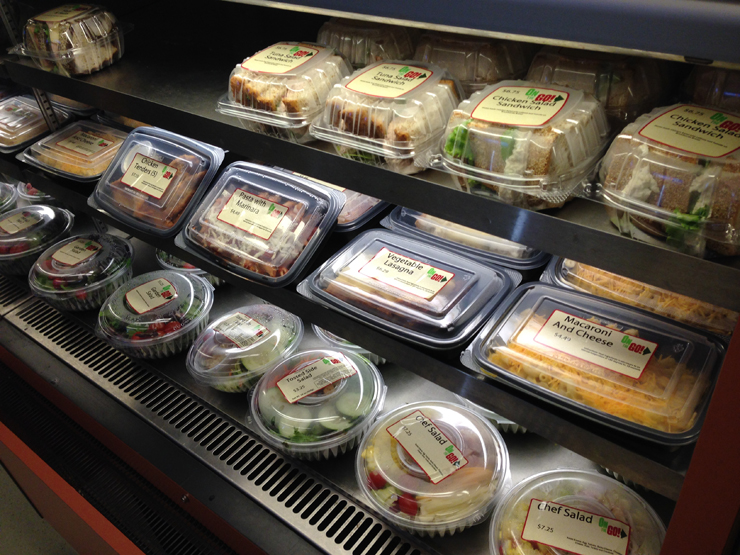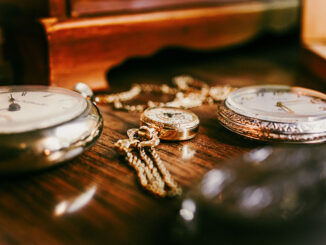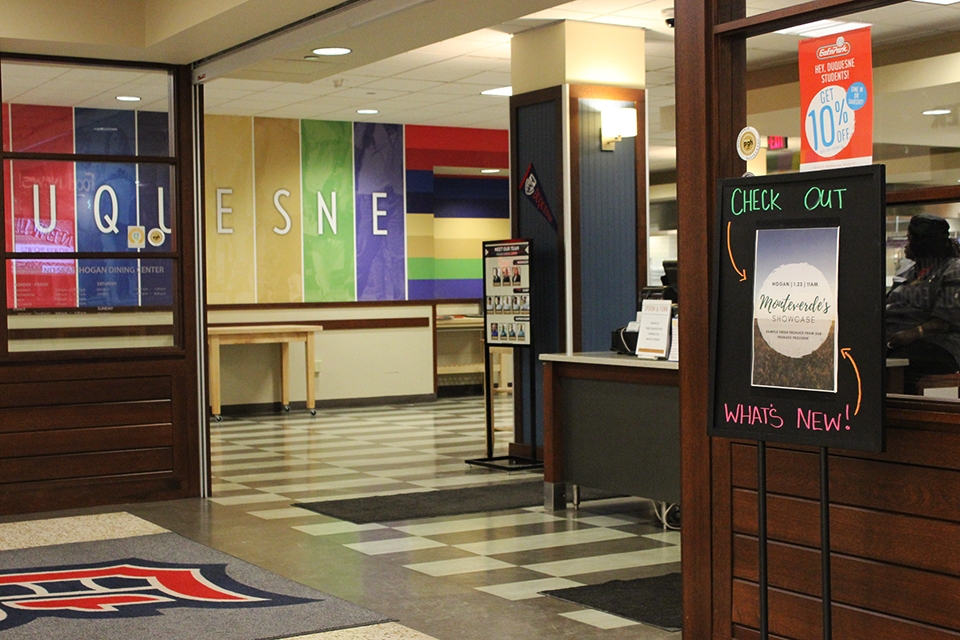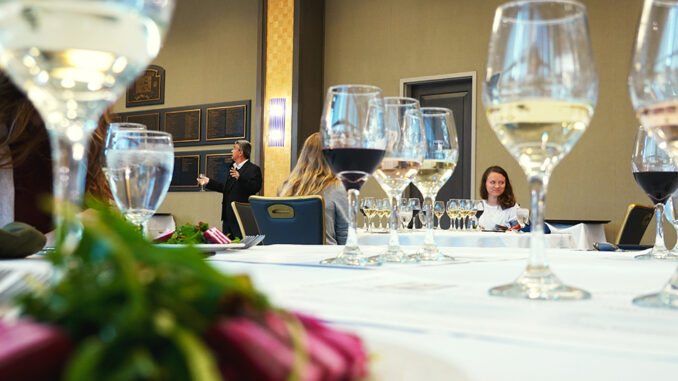
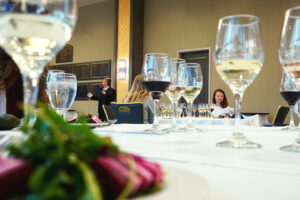
Griffin Sendek and Carissa Haslam | The Duquesne Duke
10/08/2020
Say what you will about them, but Catholics sure do know their wine.
Guests for senior wine tasting were greeted in the Shepperson Suite of the Power Center on Tuesday with half a dozen rounded tables, adorned in crisp white tablecloths topped with 16 half-full glasses of wine, equally dispersed amongst four place settings.
With Duquesne’s reputation for stinginess and distaste for its students’ relationship with alcohol, it was expected that there would only be enough wine to wet the lips and nothing more, making it a pleasant surprise to find the glasses full to an ample amount. The advertised “appetizers” were not simply munchies, but instead a four-course sampling of expertly curated food pairings — and some of the best food ever served on the Bluff.
The meals, prepared by Parkhurst, were so good, in fact, that it leaves one to wonder how the same dining service is responsible for the food served in Duquesne’s dining centers.
The tasting was led by professional sommelier David Fortunado, who was as charismatic as he was knowledgeable about wine. Fortunado played a big role in making the night enjoyable. Being aware of the snobbery and pretension that is associated with the world of wine, Fortunado made it a point to dispel the presumption that only certain wines can be considered good.
“If you like them, it’s good,” Fortunado said.
The tasting began with the Villa Maria Sauvignon Blanc. Fortunado walked us step-by-step through the proper etiquette for wine tasting.
Before the wine can even touch lips, it must be inspected visually. Fortunado instructed us to peer through the glass at an angle, informing attendees about the rings that form on the surface of the wine which can be inspected to help discover the age of the sample. The Sauvignon Blanc had a subtle yellow glow; however, there were no rings to be seen — granted, we do not have the expert eyes and years of experience of a professional sommelier.
Still it was not yet time to taste, for wine must be smelled before it can reach the pallet. With a swish and spin the wine danced around as the whole room room in unison stuck their noses in their glasses. Fortunado instructed us to compare the smell of the wine while it was still to the smell of the wine as it spun in our glass.
The Villa Maria, a 2017 harvest originating from Marlborough, New Zealand, carried a fruity aroma with hints of citrus and a pinch of kiwi. As Fortunado suggested, the smell intensified once the wine was aerated.
The wine was light and easy, with the flavor increasing as it traveled to the back of the throat.
Served with the Sauvignon Blanc was an arugula salad containing roasted beets and goat cheese, garnished with walnuts. The salty salad paired well with the acidic wine, balancing out the flavor. Though an excellent wine, the flight only got better with each consecutive drink.
The Clos Du Bois Chardonnay was next on the flight. This California Chardonnay had a golden shine with an almost smokey fragrance. This white wine was slightly dryer, with a flavor less intense than the Sauvignon Blanc but far more even. Fortunado paired it with a warm and creamy butternut squash soup. The hearty autumn soup was delicious on its own, but even better when matched with the white wine. It was an excellent pairing of flavors that complemented one another perfectly.
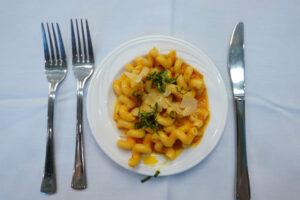
The third wine, a La Vieille Ferme rosé, was sweet and light, a nice balance of dryness with a kiss of tartness. The two previous wines offered fine examples of how the right pairing elevates a meal. However, one bite of the cavatappi pasta over red sauce topped with parmesan followed by a sip of the rosé was a transformative experience.
The best was saved for last, as the Clos du Bois Cabernet Sauvignon far surpassed all the previous samplings. The smell was pleasant and unique, but to our untrained noses it was impossible to pin down any one fragrance in particular. A sip of this bold red wine went down smoothly and without effort.
Fortunado mentioned earlier in the night how red wine was traditionally paired with steak; now having been served a roasted tenderloin over a creamy polenta, it made perfect sense why this pairing had become a classic. As we emptied this final glass and finished the last bites of steak, the night slowly came to a close.
“I really like the way David presented the material,” Bryan Partika, the graduate assistant at the Center for Student Involvement, said. “I think he presented it in a way that informed us for the future. It definitely helped me acquire different tastes.”
Having consumed what wasn’t an exorbitant amount of wine, but enough to fill the room with jovial giggles, the seniors in attendance happily filed out of the Shepperson Suite with their stomachs full and their minds packed with newfound knowledge of wine.


